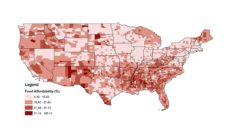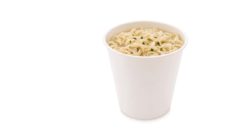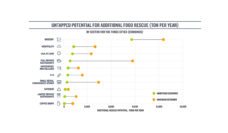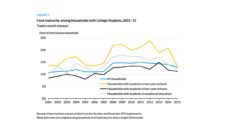As obesity continues to be a pressing health issue, researchers and policy makers have been interested in understanding the influence of food environments on shopping and dietary behaviors, particularly among low-income populations and those participating in the Supplemental Nutrition Assistance Program (SNAP). The lay public is now quite familiar with the concept of “food deserts”, defined by the United States Department of Agriculture as low-income census tracts where the nearest grocery store is greater than 0.5 mile in an urban setting and greater than 10 miles in a rural setting.
Food deserts have been explored as a potential contributor to obesity given trends showing that low-income communities have less access to healthy food and higher rates of obesity compared to higher income communities. Although a grocery store may be available in a community, there is no guarantee that fresh and nutritious foods will be available inside that grocery store, and the availability of healthy foods in a store has been associated with better dietary outcomes.
Twenty-eight states distribute SNAP benefits in one allotment within the first 10 days of the month, and this has led to questions about how distribution of SNAP benefits may affect shopping patterns and diet. Among individuals receiving food assistance once per month, items purchased and foods consumed vary from the first week after receiving benefits to the last week of benefits (i.e., week prior to receiving the next month of benefits). The general assumption is that food choices do not vary from one week to another; however, anecdotal evidence from low-income Cleveland residents led us to question whether the food available in the store varied over the course of the month, limiting food choices when shopping at the end of the month.
To measure decrease in availability, a phenomenon we refer to as food melt, we calculated the proportion of food items available at the beginning of the month that were no longer available by the end of the month.
We documented availability, price, and quality of a specific set of 50 food items at the beginning of the month and at the end of the month in neighborhoods in Cleveland, Ohio, where at least 30% of the population received SNAP benefits. We visited 48 stores serving 28 neighborhoods in March and April of 2013. We visited supermarkets (i.e., had at least 6 fresh fruit varieties, 6 fresh vegetable varieties, raw meat, bakery items, and 3 types of milk), large grocery stores (i.e., had at least 3 fresh fruit varieties, 3 fresh vegetable varieties, raw meat or bakery, and low-fat milk), and small grocery stores (i.e., had at least 1 fresh fruit variety, 1 fresh vegetable variety, and any type of milk).
We counted available items in several categories at the beginning and at the end of the month. These included produce (14 total); staple goods (14 total); meats (20 total); and junk foods (2 total, chips and soda). To measure decrease in availability, a phenomenon we refer to as food melt, we calculated the proportion of food items available at the beginning of the month that were no longer available by the end of the month. We also documented the price and quality of these items.
We found that all stores experienced some degree of food melt indicating less availability of foods at the end of the month compared to the beginning of the month. In one out of five stores, half of the items available at the beginning of the month were no longer available at the end of the month. Overall, more than half of the stores we observed saw substantial melt (25% change or greater) in fruits and vegetables, staple items such as milk, bread or eggs, and meat items, such as fresh or frozen chicken or ground beef. However, food melt was mostly observed in the small grocery stores as opposed to the larger grocery stores or supermarkets. Notably, no junk food (i.e., chips and soda) melt was observed within any store—all stores that had junk food at the beginning of the month had the same amount of junk food items at the end of the month.
All but one supermarket observed in this study experienced at least a 10% decline in food availability from the beginning to the end of the month. These findings indicate the consumer food environment may be negatively impacting SNAP purchasing behaviors within even the most robust food retailer establishments (i.e., supermarkets) due to food availability changes from the beginning to the end of the month. Given that environment influences behavior, the shifting availability of nutritious perishable food items over the course of a month may have a negative impact on the shopping practices of SNAP beneficiaries.
It is unclear if food melt is driven by shopping practices of individuals or by stocking patterns of retailers. Anecdotally, Cleveland shoppers who use SNAP benefits have indicated that they do most of their shopping at the beginning of the month because the food is gone at the end of the month. Yet some Cleveland retailers share that they observe significantly fewer shoppers at the end of the month and limit their restocking so as not to lose money. It is possible that, in states where SNAP benefits are distributed throughout the month, food melt is not occurring. Documenting food melt in other states with different SNAP distribution schedules is an important next step for informing state SNAP distribution policies to improve food environments, shopping patterns, and dietary outcomes.
Photo by Peter Bond on Unsplash














